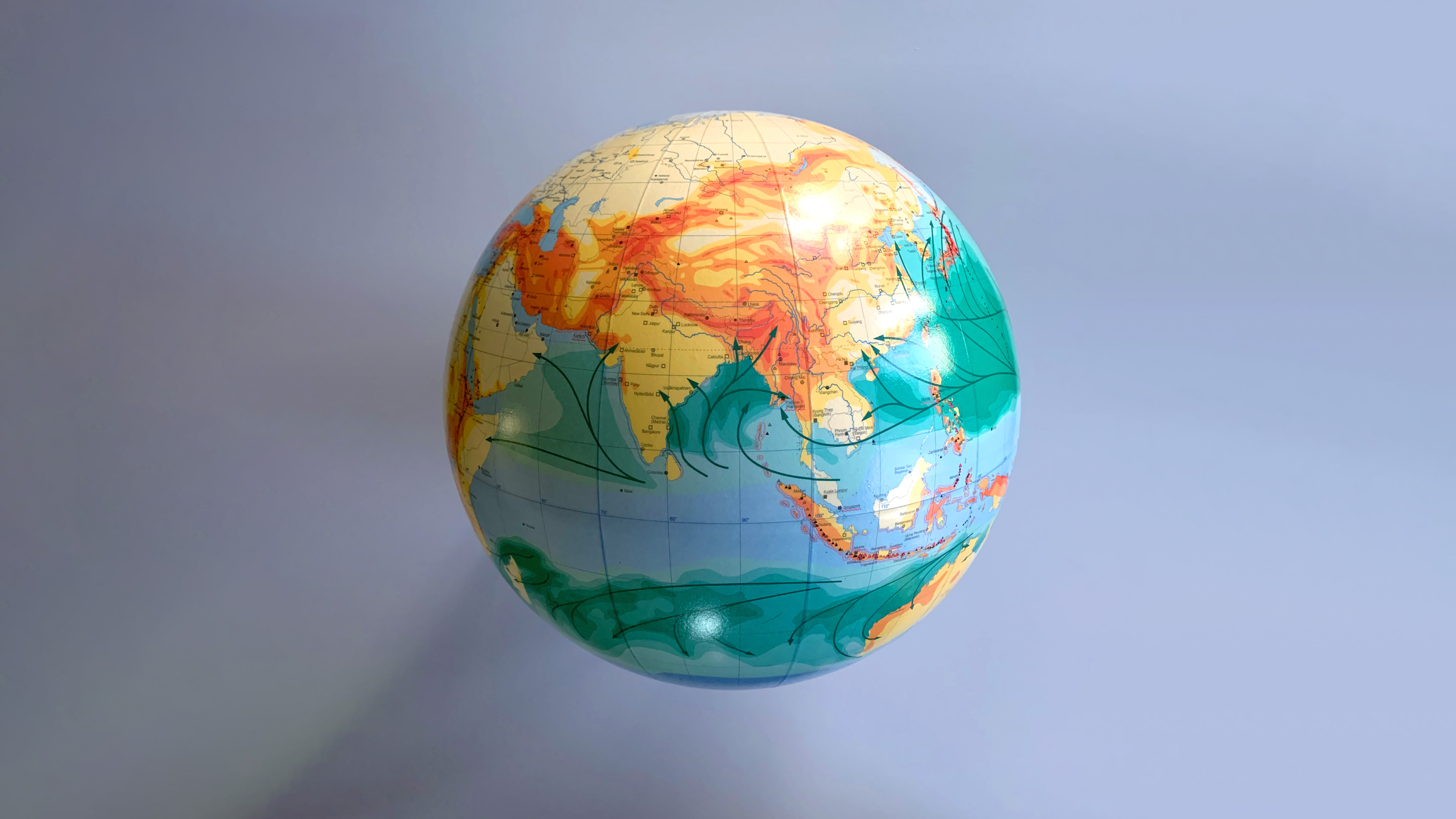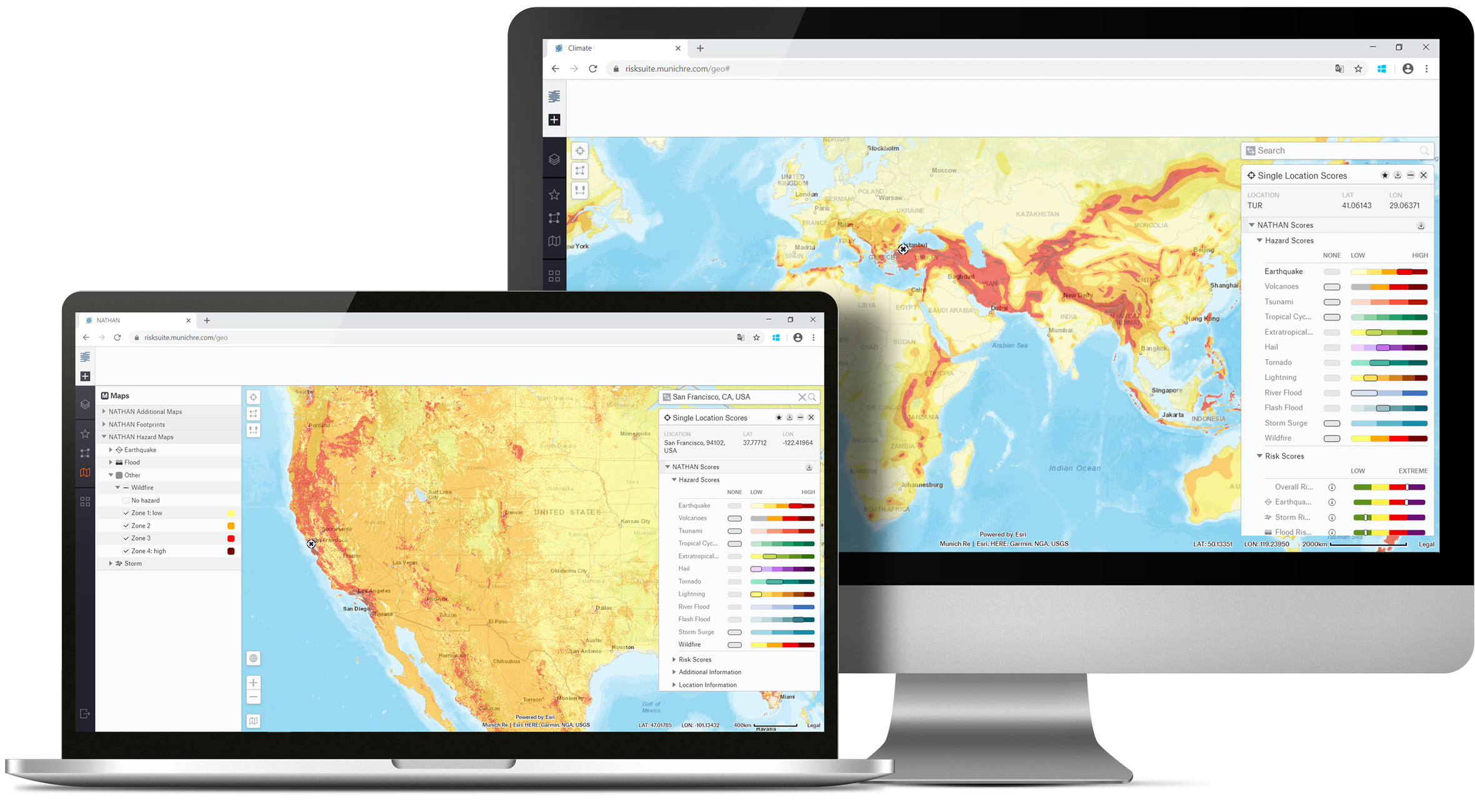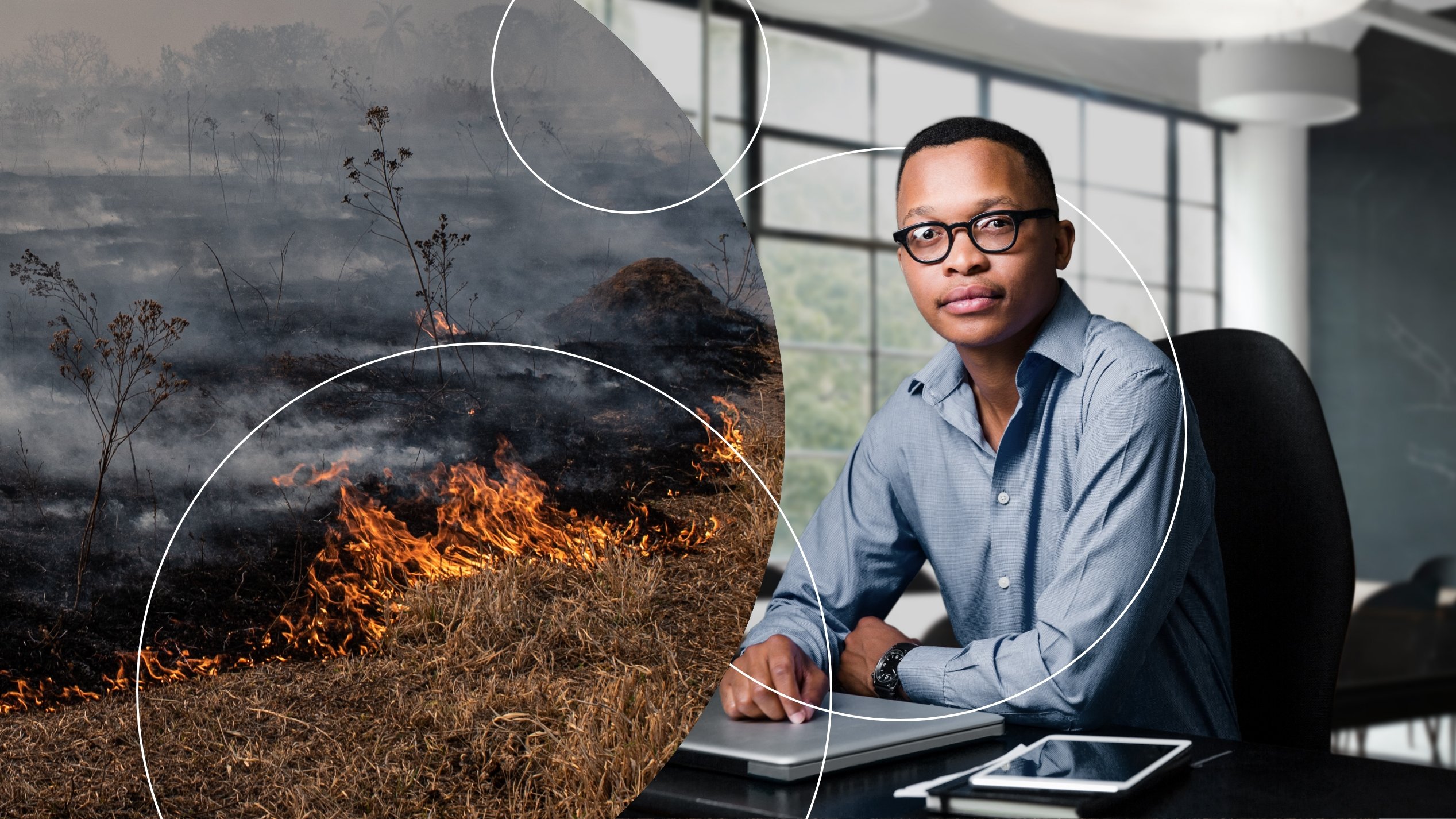
The Berlin State Library (Prussian Cultural Foundation) and the German Insurance Museum in Gotha have each received an original version of the second edition from the end of the 1990s. A third will be kept in Munich Re’s historical archive.
Topics Online talked to Andreas Siebert, Project Manager for the NATHAN natural hazard assessment tool for many years and now Senior Expert Geospatial Solutions, Jürgen Schimetschek, Geo Risks Manager at Munich Re and Christof Reinert, Head of Risk Management Partners.
What does the Globe of Natural Hazards have to do with today's digital risk management tools?
Jürgen Schimetschek: What they have in common is that everything is based on Munich Re’s enormous natural catastrophe expertise. That knowledge is important not only for underwriting in traditional reinsurance, but also for complex digital risk management tools for new client groups in the financial sector and in industry. With our location risk intelligence solutions, investors, industrial companies and banks can evaluate current natural hazard risks and future climate change risks for their business and take appropriate measures.
How do the solutions work?
Schimetschek: Extremely high volumes of data coupled with risk and climate models enable risks to be assessed for very specific locations or entire portfolios. Today's equivalent of an arrow pointing to a coloured area for cyclones on the globe is a very precise assessment of a location. And we don’t just look at current risks using historical data, but also at future developments arising out of advancing climate change using complex climate models based on scenarios for greenhouse gas emissions applied internationally – the so-called RCP scenarios.

Which client groups is that important for?
Christof Reinert: It is particularly important for clients planning for the long term, for example industrial companies deciding on locations or supply chains. Or in the financial sector for long-term investment decisions or long-term credit portfolios. Solutions such as our Climate Change Edition enable banks to assess climate risks in their assets or liabilities by location, for example the impact of climate change on extreme temperatures, extreme precipitation, drought, tropical cyclones or wildfires up to the year 2100. We are now able to offer our solutions in the form of “software as a service” in such a way that they can be directly integrated into the client's IT landscape. Essentially, the tools enable clients to better identify, evaluate and manage risks.
Going back to the Globe of Natural Hazards, what was so special about it?
Siebert: Munich Re was a pioneer in the analysis of global natural hazards and catastrophes of all kinds and the role of climate change in weather-related catastrophes, with a special department created as long ago as the early 70s. A World Map of Natural Hazards was produced in 1978, and a little over a decade later all that natural catastrophe knowledge had been captured on globes. It was, of course, not quite yet suitable for risk management at that time – more a marketing initiative.
And what came next?
Siebert: It was followed by a CD version, which was still pretty static. The DVD version produced in the mid-2000s made digital risk assessments possible for the whole world using maps. That edition was for many years an important tool in global property insurance and, with 80,000 copies produced, the most widely distributed publication in Munich Re’s history. It led in 2011 to the NATHAN tool for the online assessment of both individual risks and entire portfolios. It felt like a journey into the distant past when I was recently clearing out our archives and discovered the last of the old globes, still in their original packaging.


Munich Re Experts


/Schimetschek_Juergen.jpg/_jcr_content/renditions/crop-1x1-400.jpg./crop-1x1-400.jpg)
Related Topics
Newsletter
properties.trackTitle
properties.trackSubtitle




